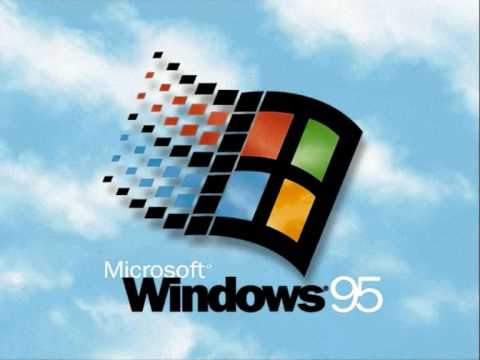
Windows 95 was released 20 years ago on Monday, a decade after Bill Gates first declared that Microsoft’s goal was to put a PC on every desk and in every home. But before Windows 95’s launch, that goal was far from accomplished. PCs had made major inroads to consumer markets, but still weren’t seen as necessities. The Internet was still considered strange and dangerous. If Gates wanted to make his vision a reality, it was no longer enough to market Windows solely to deranged office workers. Windows 95 was the answer, and in order to convince people to use it.
Agencies
Microsoft first launched Windows 95 on August 24, 1995—hence the name—with a $250 million publicity campaign and the help of Jay Leno, The Rolling Stone’s “Start Me Up” and a cyber-sitcom starring Jennifer Aniston and Matthew Perry.
Microsoft’s Windows 95 sold 7 million copies during its first five weeks.

Exactly 20 years later, the prominent operating system is still a popular choice among PC users and it’s releasing its 20th version: Windows 10.
Windows 95 was not the very first Windows. In fact, Microsoft had already worked on 1.0, 2.0 and 3.0 before ’95 was launched into the business/consumer market. Windows 95 was a game changer in the PC world and introduced us to the iconic Start button.
While Windows 3.0 ushered in an era of graphics on computers, Windows 95 made the computing experience more accessible to the everyday user.
Start Menu
- Chamisa under fire over US$120K donation
- Mavhunga puts DeMbare into Chibuku quarterfinals
- Pension funds bet on Cabora Bassa oilfields
- Councils defy govt fire tender directive
Keep Reading
The familiar start menu, usually located in the bottom left corner of the screen, was first introduced in Windows 95.
Tool Bar
Windows 95 catered to multi-taskers by debuting the first ever toolbar in Windows.
Minimize, Maximize and Close
The now ubiquitous buttons in the upper right corner of a window were first included in Windows 95.
Long File Names
Windows 95 also took away the file name limit of Windows 3.0. Users could now run wild with long, descriptive file names making it that much easier to locate a file.
Microsoft had other equally ambitious plans for Windows 95. A new Microsoft Network (MSN) application came bundled with a prominent icon on the desktop. MSN was designed to provide access to email, chat rooms, newsgroups, and the first WWW homepages through a dial-up connection. Microsoft charged a monthly fee to access MSN, and if you used it for more than three hours a month, there were extra charges. It was the early days of the internet and dial-up connections, and MSN now exists as a web service through various tailored apps or a browser.










